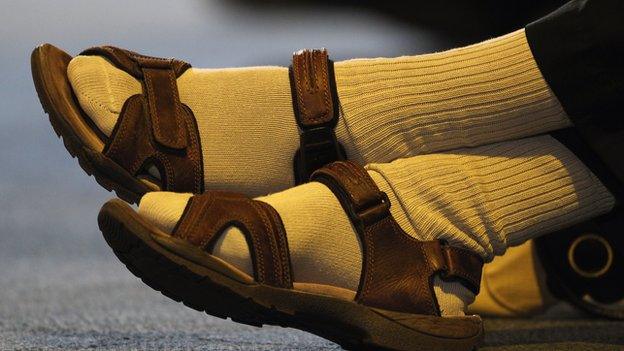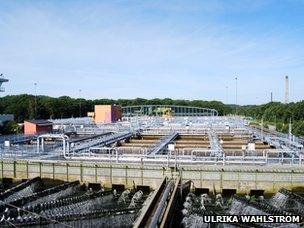Smelly socks raise silver stink
- Published
- comments

Many products including socks can be treated with silver to kill odours
Pongy old sports socks ain't what they used to be.
Where once they emitted a nose wrinkling, noxious stench from the bottom of my kit bag, thanks to the wonders of nanotechnology, the fug has lifted.
Tiny antibacterial particles derived from silver are now woven into the fabric of many modern sweat socks to kill nasty odour-causing bacteria. And it's not just socks. These nanoparticles are now included in a wide range of products including cosmetics, food containers and detergents.
But although these items have been around for a long time it wasn't until this year that scientists fully understood how they worked.
A paper, external in the journal Nano Letters explained that the silver doesn't kill bacteria by direct contact but soluble ions, activated via oxidation pull the plug on the smell makers.
Total washout
Even when they didn't know how they worked, researchers were concerned that the silver in socks and other products could have a negative impact on the environment.
When the socks and other items are washed, the silver particles are released and enter the water system.
In Denmark questions were raised in Parliament. The Environmental Protection Agency was sent to investigate.

The waste water treatment plant in Sweden where research on sludge was carried out
Initially, they struggled to actually find products that contained nanosilver even though they were advertised as anti-bacterial.
When they did manage to sniff out the odour free socks and shoes, they concluded, external that there was no risk of health effects to humans or biological effects in the aquatic environment.
Further research, external carried out in the US looked at nanosilver in T-shirts and came to a similar conclusion. They found that the toxic releases of silver particles from the washing and disposal of T-shirts "appeared to be of minor relevance."
But not everyone has been convinced by these arguments.
Swedish researcher Rickard Arvidsson felt that these experiments were essentially missing a trick. They looked for evidence of silver in the water after the socks and shirts had been washed. What they didn't do was look in the sludge that accumulates when water is treated.
In Gothenburg's waste treatment plant, Rickard discovered a silver lining in the cloudy waters.
Silver future
In his study, external, Rickard found that the amount of metal in the sludge depended on the concentration in the clothing - and this varied hugely.
"If the concentration of silver is high," he told me, "there will be really high concentrations of silver in the sludge - if you apply the sludge onto agricultural land it will probably damage organisms there."
Rickard believes that more study is required and there could be concerns for human health.
"Silver is used as an anti-bacterial in healthcare today and that use would not be possible if all the bacteria were resistant to silver."
Whether or not the impact of these particles becomes an issue of substance or dissipates as many environmental problems sometimes do, there is another good reason why the future of the metal might not be so solid.
Silver is rare - Some estimates suggest that our global resources may be depleted within 30 years.
It makes recycling silver a smart thing to do.
And it might make sense to save your socks as well, smelly or otherwise.